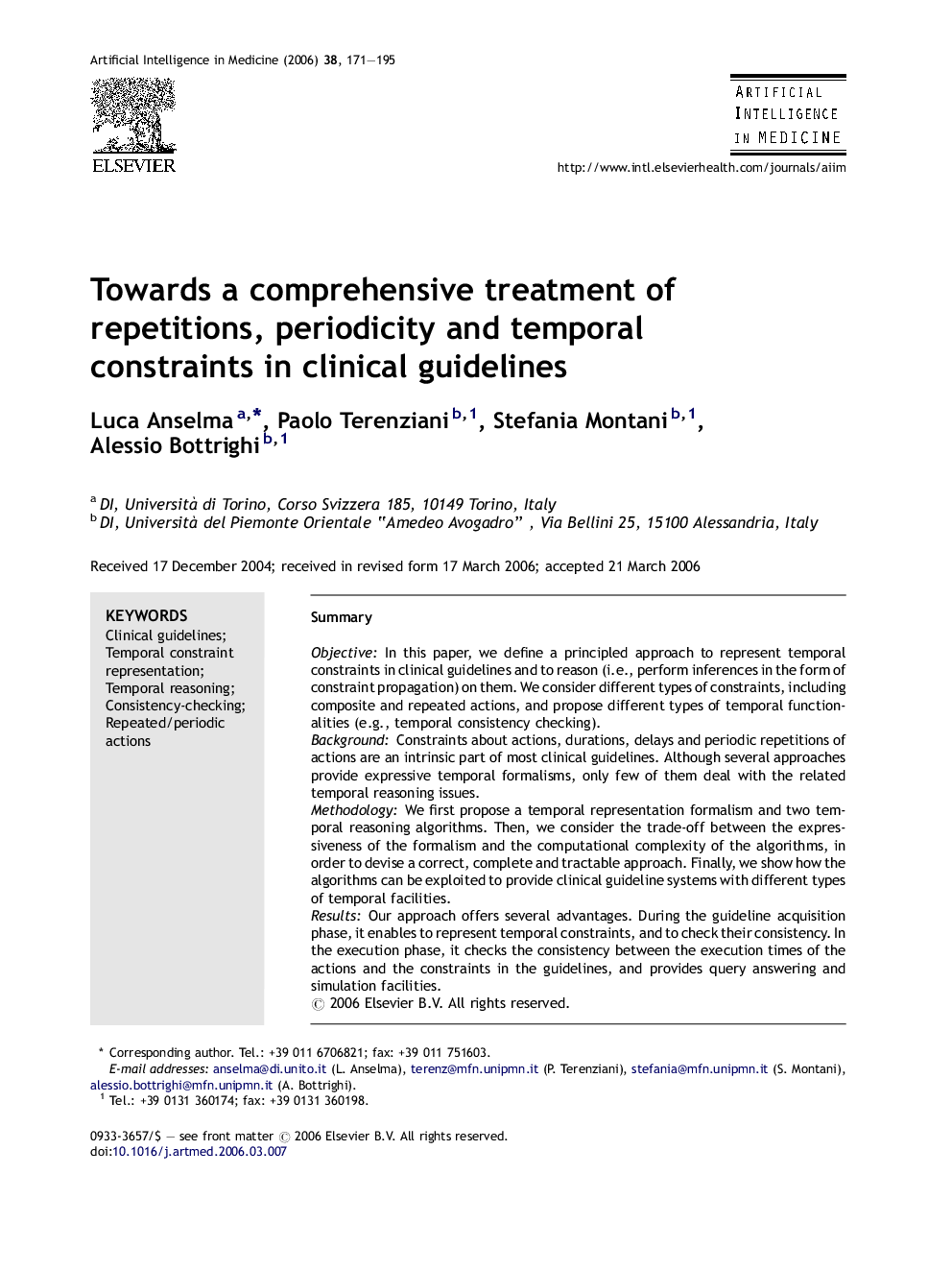| Article ID | Journal | Published Year | Pages | File Type |
|---|---|---|---|---|
| 378196 | Artificial Intelligence in Medicine | 2006 | 25 Pages |
SummaryObjectiveIn this paper, we define a principled approach to represent temporal constraints in clinical guidelines and to reason (i.e., perform inferences in the form of constraint propagation) on them. We consider different types of constraints, including composite and repeated actions, and propose different types of temporal functionalities (e.g., temporal consistency checking).BackgroundConstraints about actions, durations, delays and periodic repetitions of actions are an intrinsic part of most clinical guidelines. Although several approaches provide expressive temporal formalisms, only few of them deal with the related temporal reasoning issues.MethodologyWe first propose a temporal representation formalism and two temporal reasoning algorithms. Then, we consider the trade-off between the expressiveness of the formalism and the computational complexity of the algorithms, in order to devise a correct, complete and tractable approach. Finally, we show how the algorithms can be exploited to provide clinical guideline systems with different types of temporal facilities.ResultsOur approach offers several advantages. During the guideline acquisition phase, it enables to represent temporal constraints, and to check their consistency. In the execution phase, it checks the consistency between the execution times of the actions and the constraints in the guidelines, and provides query answering and simulation facilities.
